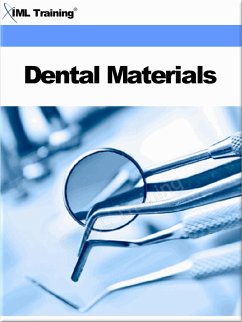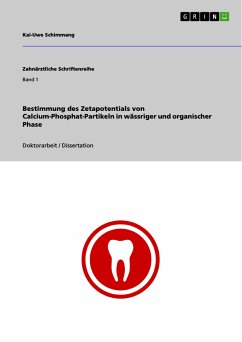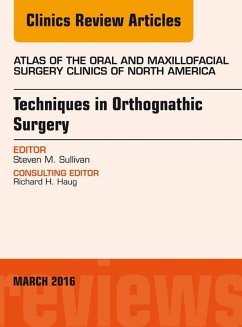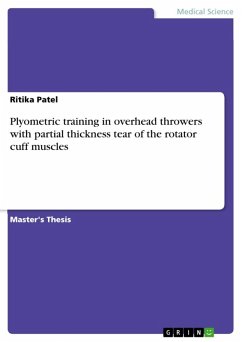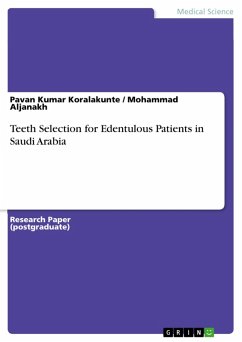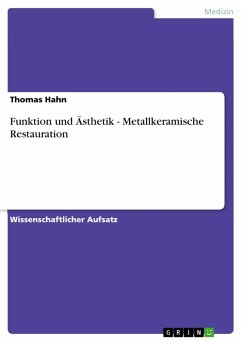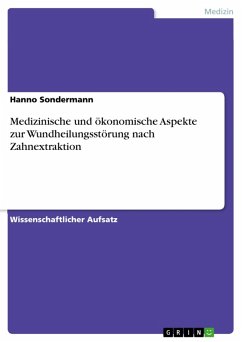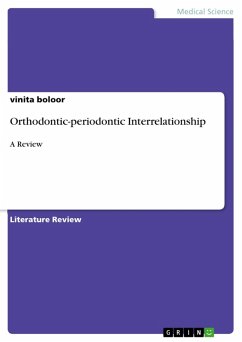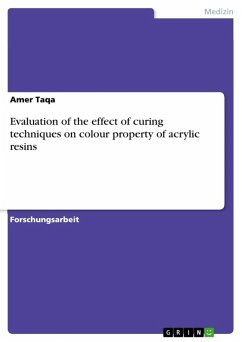
Evaluation of the effect of curing techniques on colour property of acrylic resins (eBook, ePUB)

PAYBACK Punkte
0 °P sammeln!
Forschungsarbeit aus dem Jahr 2004 im Fachbereich Medizin - Zahnmedizin, University of Mosul (Dental college), Sprache: Deutsch, Abstract: This study was carried out to evaluate the colour property of two types of acrylic resin materials cured by microwave technique in comparison with that cured by conventional water bath technique. Two types of heat cured acrylic resin materials were selected: Quayle-Dental and Major-base types. Seventy-two samples (30×20×1.5 mm) were prepared and divided into four experimental groups: Quayle-Dental and Major-base groups were cured by microwave technique an...
Forschungsarbeit aus dem Jahr 2004 im Fachbereich Medizin - Zahnmedizin, University of Mosul (Dental college), Sprache: Deutsch, Abstract: This study was carried out to evaluate the colour property of two types of acrylic resin materials cured by microwave technique in comparison with that cured by conventional water bath technique. Two types of heat cured acrylic resin materials were selected: Quayle-Dental and Major-base types. Seventy-two samples (30×20×1.5 mm) were prepared and divided into four experimental groups: Quayle-Dental and Major-base groups were cured by microwave technique and the others Quayle-Dental and Major-base groups were cured by water-bath technique. The number of samples for each group was 18. The colour property for the samples was evaluated using computerized ultra-violet-visible spectrophotometer with acc-uracy up to 0.001 nm. The absorbed light was measured which is also termed the optical density. The results of this study showed that there were no significant differences in optical density for acrylic resin samples cured by microwave and water-bath techniques, and the acrylic resin with smaller particle size (Quayle-Dental) showed higher optical density (colour property) than that of larger particle size (Major-base). Key Words: Optical density, colour prop-erty, microwave technique.
Dieser Download kann aus rechtlichen Gründen nur mit Rechnungsadresse in A, B, BG, CY, CZ, D, DK, EW, E, FIN, F, GR, HR, H, IRL, I, LT, L, LR, M, NL, PL, P, R, S, SLO, SK ausgeliefert werden.




